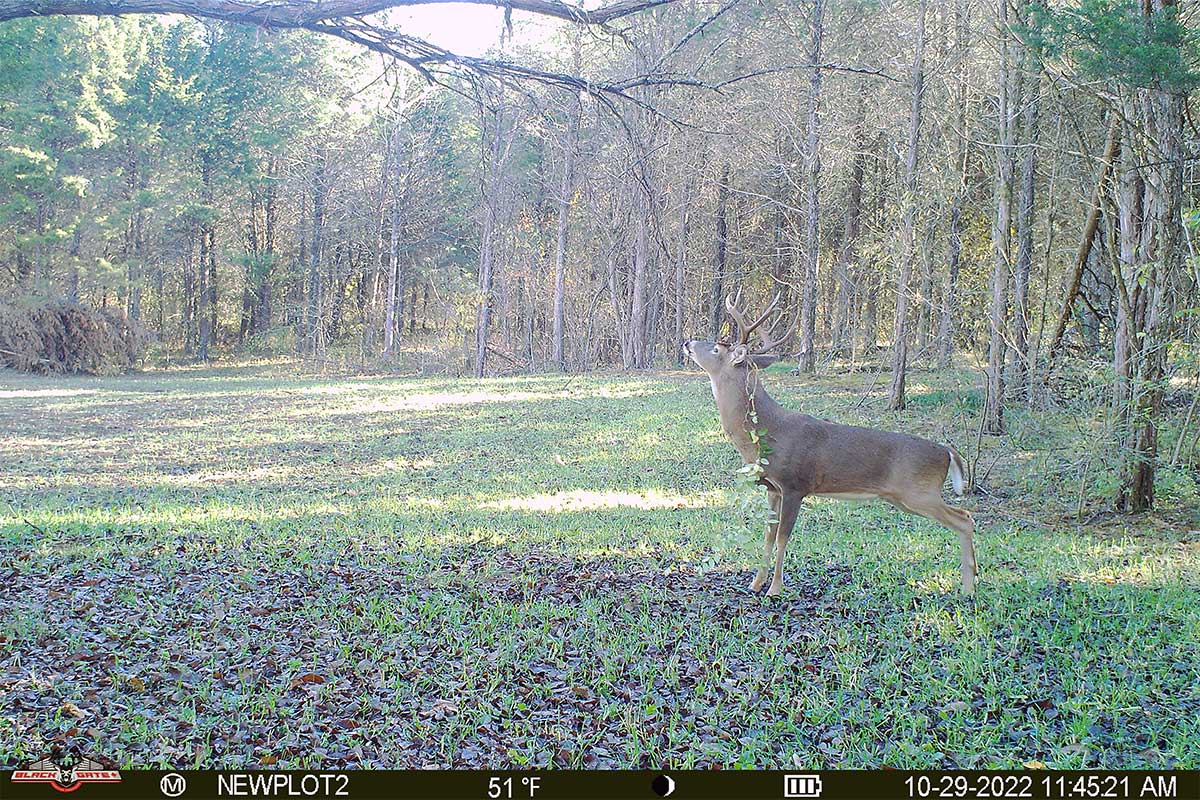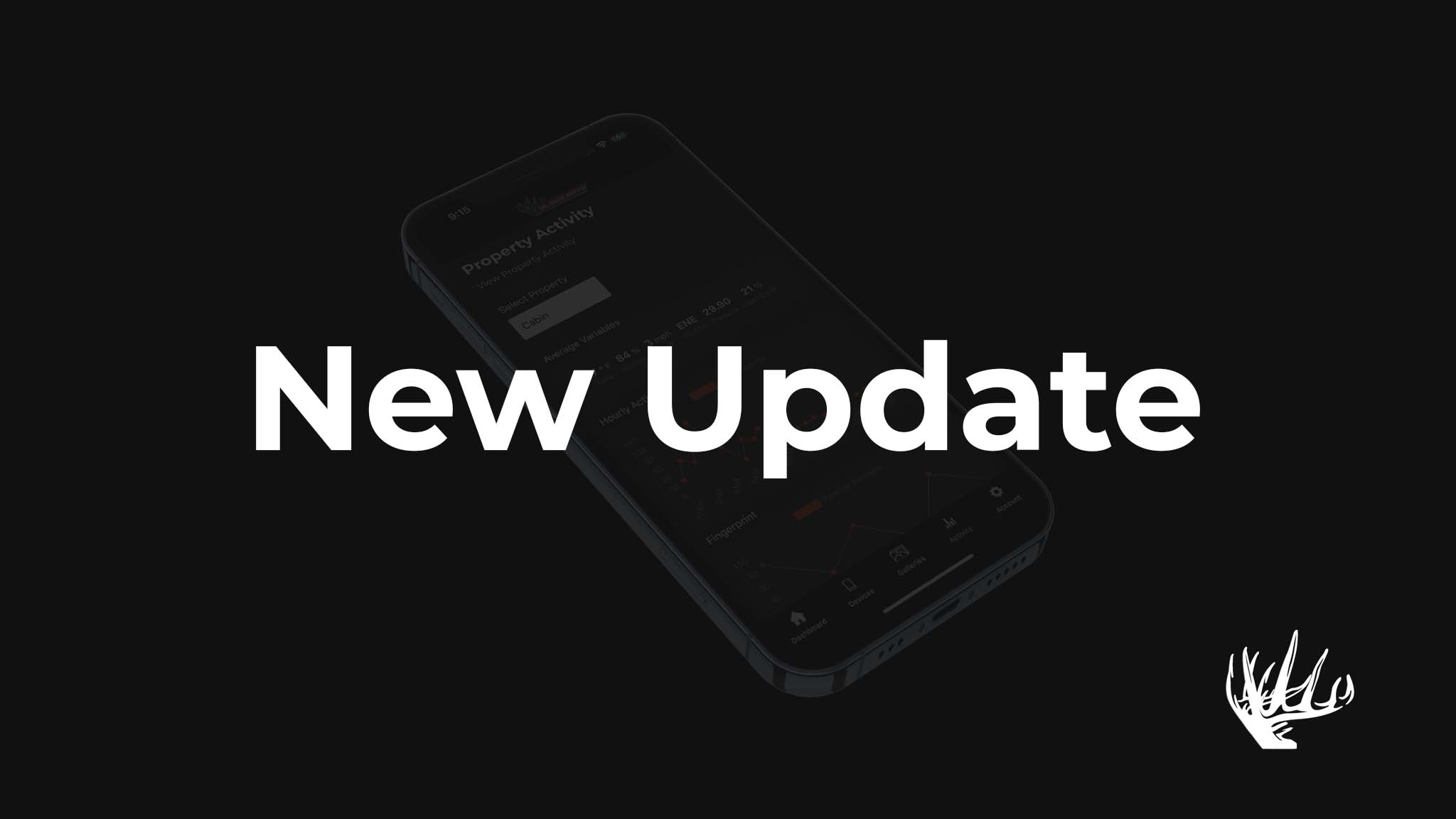When it comes to successful October hunting, knowing when deer move is just as important as knowing where. In this transitional month, whitetail behavior shifts dramatically as they move from feeding patterns into pre-rut routines. And while scrapes, bedding areas, and food sources still matter, the clock may be the most powerful weapon in your scouting arsenal.
At Black Gate Hunting, we constantly track real-world deer patterns through our cellular trail cameras—and the October data doesn’t lie: timing is everything.
In this post, we’ll break down the best times of day to capture deer on trail cameras in October, how those patterns evolve throughout the month, and how to adjust your camera setups to catch bucks when they’re most active.
⏰ Why Timing Matters in October
October is unique. Bucks are no longer in their summer bachelor groups, and while the rut isn’t in full swing yet, hormones are starting to shift. As daylight begins to shrink, deer become more responsive to cooler temps, barometric changes, and shorter feeding windows.
If you're only checking your cameras weekly or sitting the same stand every morning and night without a plan—you could be missing your best opportunity.
Here’s how to be smarter with your camera placement and photo timing.
📊 Top 3 Windows for Trail Camera Success in October
1. Last Light: 5:00 PM – End of Legal Shooting Light
This is the #1 window for catching mature bucks in daylight—especially in the first 15–20 minutes before dark. As the month progresses and the temps cool, bucks get more confident slipping into food sources earlier in the evening.
✅ Best Spots to Monitor:
- Field edges near acorns or cut crops
- Scrape lines 30–80 yards off food plots
- Entry trails into open fields
📷 Camera Setup Tips:
- Use burst mode or 3-shot sequences
- Angle cameras perpendicular to trails or at a 45 degree angle
- Monitor wind direction—bucks often enter with it at their nose
2. First Light: 6:30 AM – 8:30 AM
Early October mornings can feel slow—but as mid-October arrives, bucks start daylighting earlier, especially near doe bedding areas. Cooler temps and rising pressure after a cold front can drive solid activity at dawn.
✅ Best Spots to Monitor:
- Downwind of bedding areas
- Funnels between ridges or timber breaks
- Travel corridors from nighttime food sources
📷 Camera Setup Tips:
- Keep cameras around waist height
- Choose photo mode with minimal delay
- Set to capture during all hours
3. Midday Movers: 11:00 AM – 2:00 PM
Yes, really—midday movement is real, especially during cold fronts and the latter half of October. Bucks begin covering more ground as daylight pressure builds. If you see a mature buck hitting a scrape at noon—believe it.
✅ Best Spots to Monitor:
- Community scrapes near thick cover
- Hidden staging zones
- Remote logging roads or oak flats
📷 Camera Setup Tips:
- Keep your Black Gate cellular trail camera active all day
- Don’t ignore one-off photos—one picture at 1:17 PM could be the pattern you need
- Consider using video mode to watch body language and direction of travel
📉 How October Timing Shifts Over the Month
October isn’t static—here’s how deer movement generally evolves:
|
Week |
Behavior |
Best Time to Monitor |
|
Oct 1–7 |
Feeding-focused |
Evening, right before dark |
|
Oct 8–14 |
Increased scraping, solo bucks on the move |
Morning + evening |
|
Oct 15–21 |
Pre-rut staging begins |
Dawn, dusk, and midday |
|
Oct 22–31 |
Bucks roam for early does |
All-day movement spikes |
Pay attention to temperature swings and moon phases, but don’t overthink—your Black Gate trail cam data will tell you what’s really happening in your area.
🧠 Trail Camera Strategy Tips for Better Timing
Here are a few actionable tips to help you dial in your cameras for optimal timing:
- hybrid mode: Catch movement over wide areas (like food plots) in a photo + video mode to watch body language and activity
- Use Black Gate’s folders/gallery system: Makes it easier to detect patterns week over week.
- Track moon position and pressure spikes: Pair it with cam photos to spot correlations.
🦌 Don’t Miss the Moment
You could have the best cellular trail camera on the market (like the Black Gate R4G Lite+ or R4G Gen 2) and the perfect location—but if you're missing the right time of day with location, you're missing the pattern that puts a mature buck in your sights.
October is a narrow window, and deer don’t operate on our schedule. But with the right trail camera strategy, smart timing, and a bit of cold front luck, you’ll start getting the kind of data that leads to success.
🔔 Final Thought: Let the Data Guide You
Trust your trail cams more than your gut.
Let the photo timestamps show you the trends. Is the same buck hitting that scrape between 6:45 and 7:10 PM three nights in a row? Adjust your setup. Catching one at 12:30 PM on a cold snap? Be in that tree the next day.
Your October success isn’t about hunting hard—it’s about hunting smart.




Share:
From Summer to Fall: Adjusting Your Trail Camera Techniques in October
October Food Sources Every Hunter Should Monitor With Trail Cameras